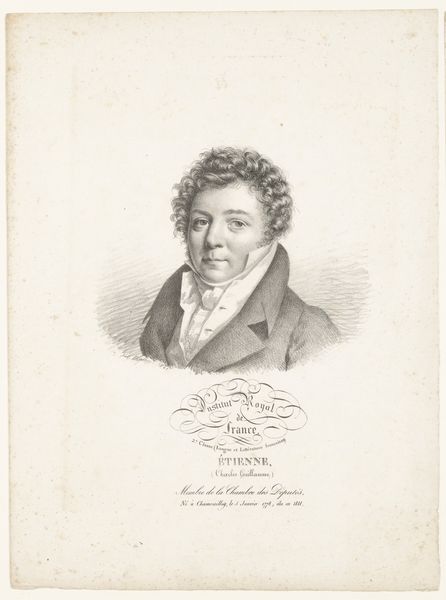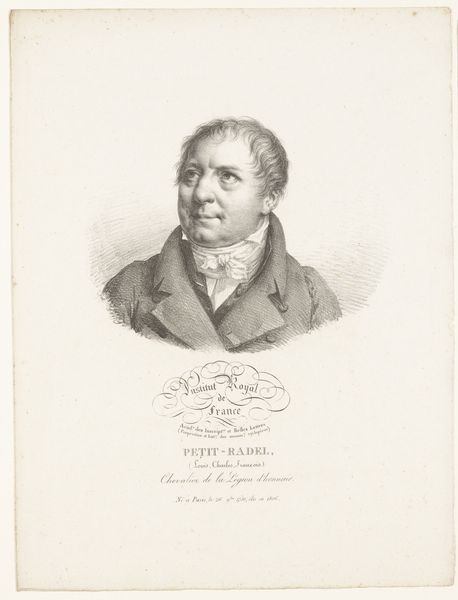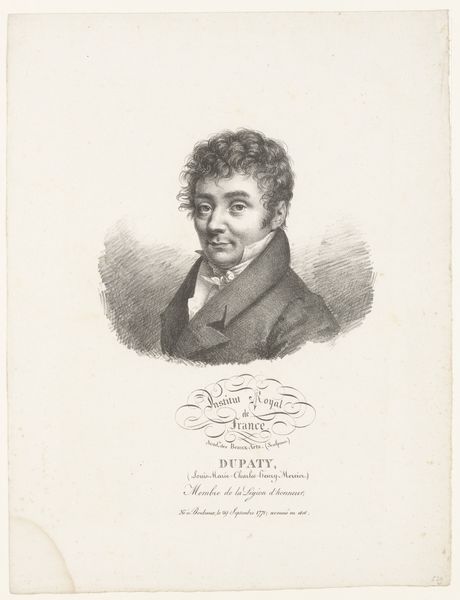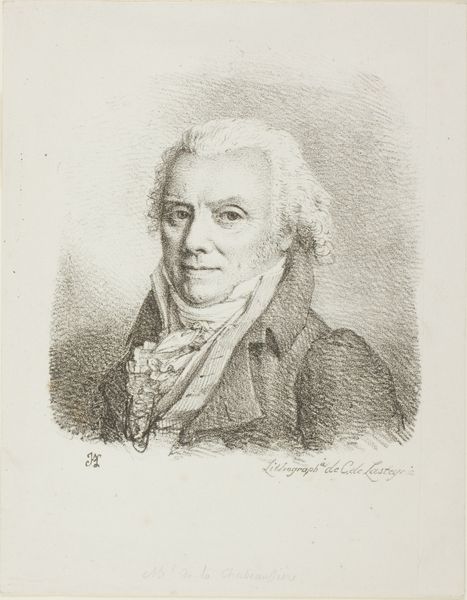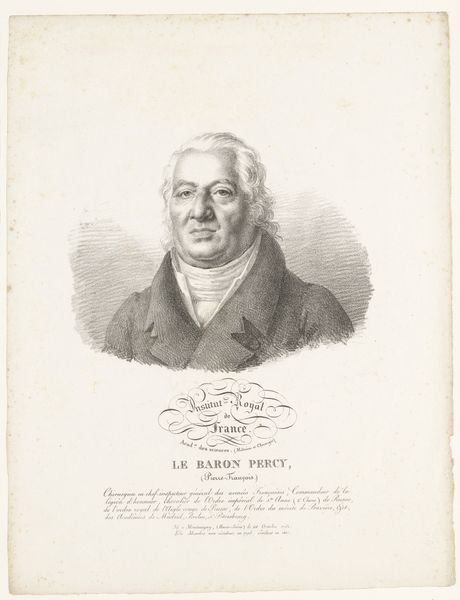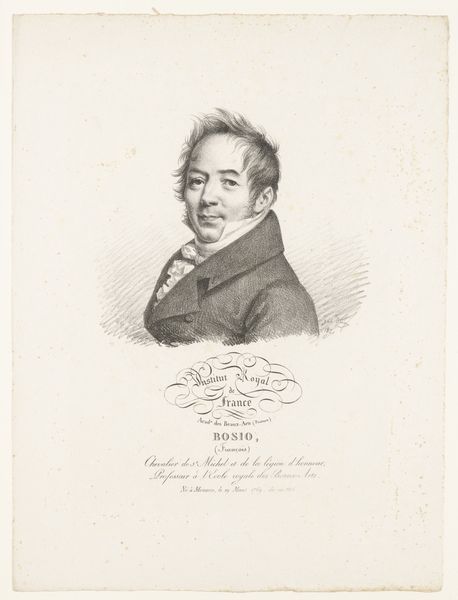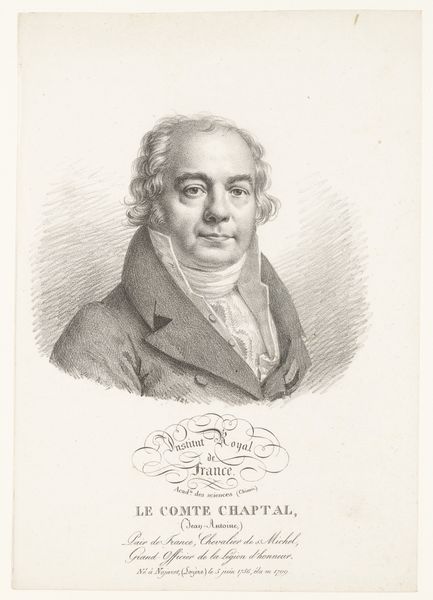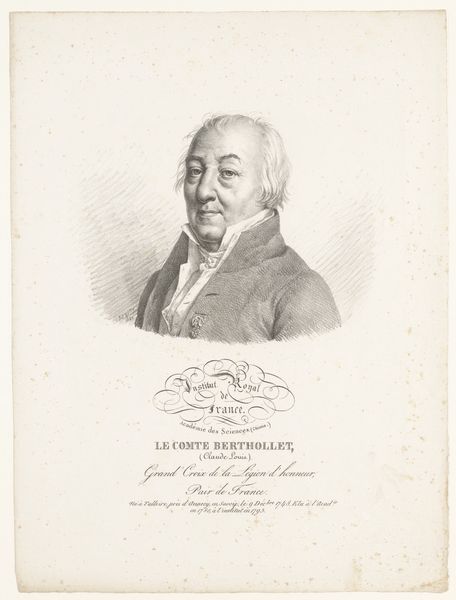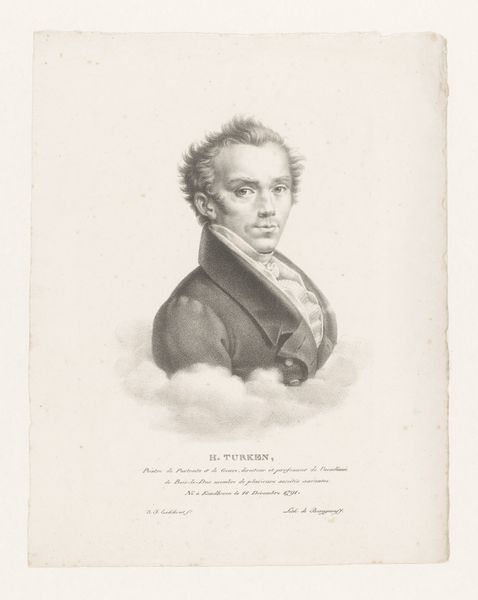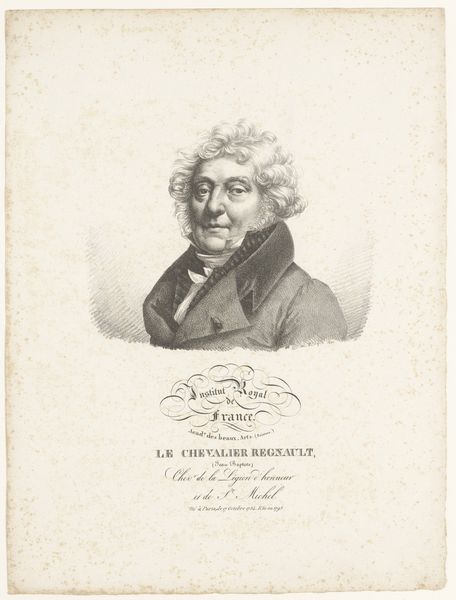
drawing, pencil
#
portrait
#
pencil drawn
#
drawing
#
neoclacissism
#
light pencil work
#
pencil sketch
#
pencil drawing
#
pencil
#
pencil work
#
history-painting
#
academic-art
Dimensions: height 355 mm, width 273 mm
Copyright: Rijks Museum: Open Domain
Julien-Léopold Boilly made this portrait of Alexander von Humboldt, possibly in France, using a lithographic stone. Humboldt was one of the most famous scientists of the late 18th and early 19th centuries. This image creates meaning through its references to the cultural and institutional context of the time. Humboldt’s association with the Royal Institute of France reflects the growing importance of scientific institutions in Europe. His portrait was created at a time when science was increasingly seen as a tool for understanding and controlling the natural world, but also when the rise of institutions like the Royal Institute allowed people like Humboldt to become famous intellectuals. As historians, we can consult sources such as scientific publications, personal correspondence, and institutional records to better understand the social conditions that shaped Humboldt's work and legacy. In this way, we can appreciate the portrait as not just a likeness, but as a window into a specific moment in the history of science and culture.
Comments
No comments
Be the first to comment and join the conversation on the ultimate creative platform.


